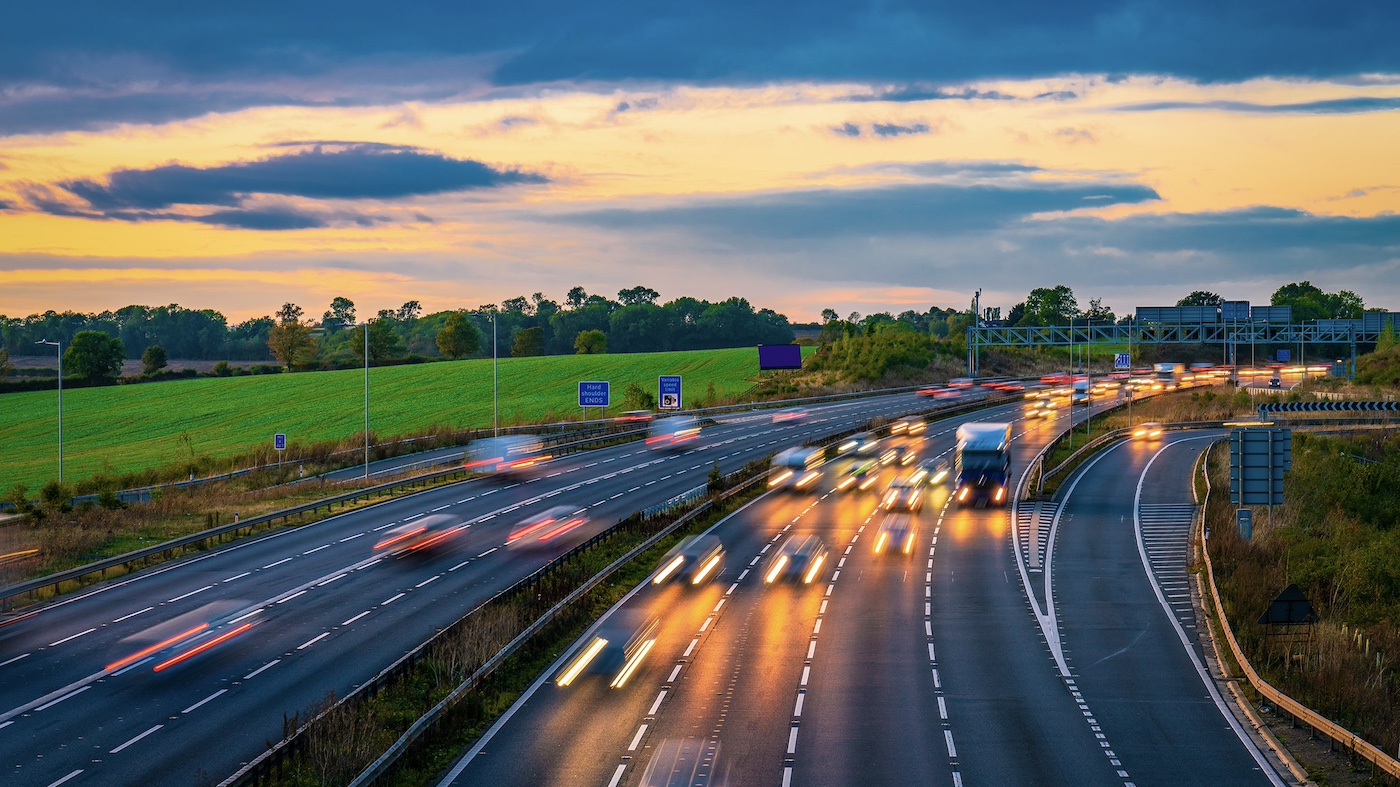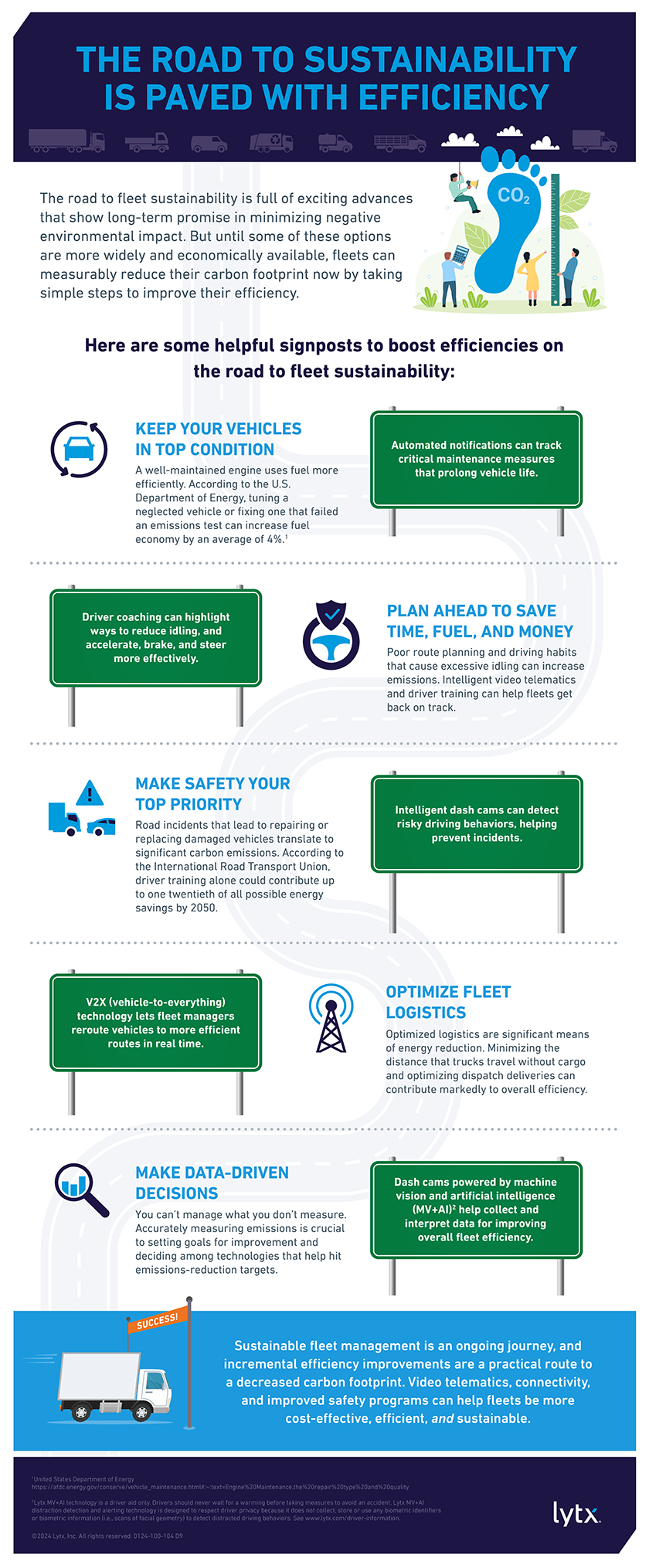The Route to Decarbonisation: Five Ways Fleets Can Pursue an Efficiency Focus Approach

For commercial fleets, the desire to decarbonise has been present for some time. When asked about their business priorities in 2022, almost half of UK commercial fleets put sustainability and carbon reduction top of the list. Two years on and we are now seeing talk turn to action.
For many, the first solution that springs to mind is to incorporate alternative fuel options into their fleet, including biofuels, electric vehicles (EVs) and hydrogen-powered vehicles. This offers great potential in the long-term, but many of these solutions are not yet ready for mass adoption by commercial fleets.
More recently, studies have suggested that fleets are likely to see more of an impact – and realise decarbonisation gains sooner – if they focus their efforts on incremental efficiencies. The International Road Transport Union (IRU) recently concluded an extensive research project as part of its Green Compact initiative which demonstrated that nearly two-thirds of CO2 emission reductions can be achieved by 2050 through energy savings.
To understand how fleets can achieve an efficiency-led approach, we spoke to global organisations and experts in the field to hear their experiences. Here, we have summarised some of their learnings and outlined five measures fleets can take – including optimised route planning, regular vehicle maintenance, driver training, and incident reduction.
1. Better planning, better driving
There are many small ways to achieve vehicle efficiencies, all of which can have a cumulative impact in the form of energy savings and reduced fuel costs. One of these is a focus on better driving habits. Vehicle idling, inefficient route planning and poor driving habits can all increase emissions while consuming increased amounts of fuel and driving up costs. Advanced technologies, such as intelligent video telematics can help to address these challenges. This same technology can be used to support driver training and coaching – teaching drivers how to accelerate, brake, and steer more effectively.
2. Optimising vehicle health and performance
Well-maintained vehicles run more efficiently and therefore consume less fuel, resulting in fewer emissions. Vehicle maintenance monitoring and scheduling technology can help to reduce polluting factors such as wear and tear on tyres as well as engines. One way for fleet managers to address this is by taking a proactive approach.
To keep the entire fleet running as fuel-efficiently and sustainably as possible, fleet managers should schedule regular workshop maintenance. This includes looking at everything from odometer insights to diagnostic alerts on key components such as engines and tyres, and automated vehicle checks.
3. Intelligent video for incident prevention
Avoiding incidents is the best way to protect vehicles, drivers and other road users. When you consider that 42% of commercial fleet vehicles are involved in 1-5 collisions per year, the number of annual repairs and replacements is also an important consideration. Intelligent dash cams can help prevent incidents from happening altogether. Accident reduction not only contributes to reducing the carbon emissions involved in repairing vehicles but also to keeping the most important asset – the driver – safe.
Powered by artificial intelligence (AI), Lytx® video technology can detect risky behaviours and provide both the driver and fleet manager with a notification before an incident occurs. For example, it can identify that a driver is at risk of falling asleep or when distractions, such as looking down at a message on their phone, are affecting concentration. An in-cab alert then notifies the driver, empowering them to change their behaviour in the moment, refocusing their attention back on the road and preventing an incident.
This technology helped Lytx customers avoid $1.4 billion worth of claims in the US alone in 2022. A critical tool for commercial fleets, it is helping to create a virtuous circle of sustainability, safety and financial savings.
4. Optimised logistics
In its 2050 scenario modelling, IRU places optimised logistics as the second most effective means of energy reduction. These logistics initiatives include reducing empty miles, the distance that trucks travel without cargo, and optimising dispatch deliveries wherever possible.
New vehicle technologies such as V2X (vehicle-to-everything) connectivity, along with measures such as platooning, are enabling longer-term logistics efficiencies. For example, truck platooning, in which long-haul vehicles travel in convoy, offers significant aerodynamic and fuel-saving gains, with the potential to reduce carbon emissions by 16%.
5. Data-driven decisions
With more companies under pressure to justify themselves via ESG reports, gathering data is essential. Emission data and impact measurement are becoming critical. As Neil Cawse, founder and CEO at Geotab, told us, ‘‘you can’t manage what you don’t measure.” If companies want to make informed decisions about sustainability, they need to have data-driven insights. We know the path to sustainability won’t be easy for businesses, but having access to the right data will help them understand how to achieve it.”
To gather this level of data, we are now starting to see more fleets consolidate in-cab devices and opt for hardware that offers connectivity to fleet management systems from fewer devices. Connectivity from a single device can provide managers with advanced insight into emission data and other operational metrics, while reducing costs and limiting environmental waste.
It’s also possible that, in the not-too-distant future, we’ll start to see the commercial fleet industry collaborate and share data that could help reduce carbon emissions and lower the risk to drivers. This could include early warning of debris on the road or where flooding and other poor weather conditions might force a vehicle to reroute.
To learn more about how you can decarbonise in the fastest, least disruptive and most cost-effective way, read our report, The Road to Sustainability: Why Efficiency is the Key.


